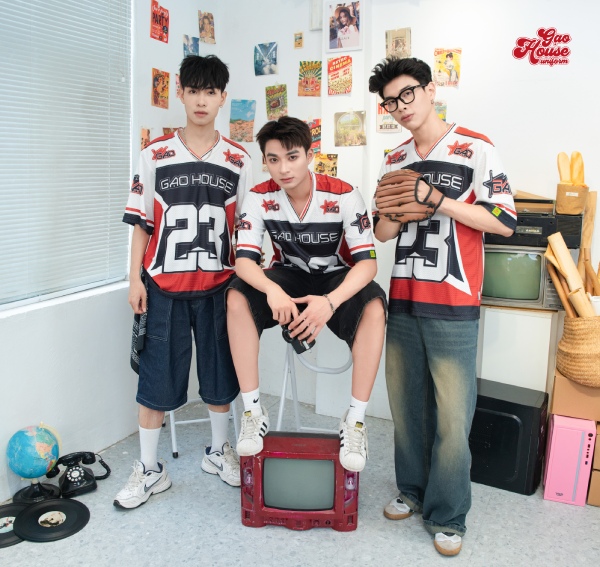
The Significance of Uniform Colors in Middle School: More Than Just Style
When you think about your middle school uniform, you might first focus on how it feels or how it fits. But have you ever considered the deeper significance of the colors in your uniform? Whether it's a rich navy, bright white, or even a unique combination of shades, the colors chosen for your school uniform aren't just about appearance. They hold meaning, represent values, and can even impact your mood and behavior. With over 20 years of experience in content SEO writing, I’ve seen how the subtle art of color can enhance the school experience. In this article, we’ll explore the powerful role of color in middle school uniforms and why these hues go far beyond just fashion.
1. Colors Reflect School Identity and ValuesThe colors of your middle school uniform often serve as a representation of the school's identity and values. For example, many schools opt for shades of blue, green, or red in their uniforms, colors that symbolize trust, growth, and passion, respectively. These colors aren’t randomly chosen—they reflect the mission and values of the school. When you wear your school uniform, you're not just wearing a set of clothes; you are embodying your school’s spirit. The colors unite you and your classmates, giving you a sense of pride and belonging. The simple act of wearing your school’s colors each day reinforces your connection to the school community and its ideals.
See more : quần áo đồng phục học sinh cấp 2
2. Color Psychology: Impact on Mood and BehaviorDid you know that color can have a significant effect on your mood and behavior? The psychology of color plays a crucial role in how we perceive the world and how we feel. For instance, blue is often associated with calmness and focus, which is why many schools use this color in their uniforms. When you wear blue, you might feel more relaxed and centered, which can be beneficial for concentration during lessons. On the other hand, colors like red are known to energize and motivate, often being linked to passion and action. This can boost your enthusiasm and school spirit, especially when you wear a uniform that includes these colors.

Uniform colors also serve a practical purpose in promoting equality among students. When everyone wears the same color or color combination, it eliminates the potential for competition based on what clothes people wear. In middle school, where social pressures are often at their peak, uniforms with standardized colors help create a level playing field. Regardless of your background or financial status, the uniform ensures that everyone has the same outward appearance. This shared color scheme fosters a sense of unity and equality, which can have a positive impact on school culture. It helps students focus more on personal growth and academics than on comparing outfits.
See more : https://gaohouse.vn/blogs/suc-khoe-doi-song/dia-diem-cam-trai-quan-9
4. The Role of Color in School PrideColors in a school uniform can also ignite a sense of pride. Think about your school’s team colors—these are often the same as those in your uniform. When you wear these colors, whether it’s a t-shirt, polo, or jacket, you are symbolizing your school’s collective identity. School colors help build a strong community, where everyone feels connected to the same cause and goal. Whether you're attending a sports event, participating in school assemblies, or simply walking down the hall, the color of your uniform reminds you that you are part of something bigger than yourself. This sense of pride can boost confidence and motivation, inspiring you to do your best in all that you do.
5. Color as a Symbol of Discipline and FocusUniform colors are often chosen to represent discipline and focus—qualities that are essential in a school environment. Dark colors like navy blue or charcoal grey, for example, exude a sense of professionalism and seriousness, which is conducive to a focused mindset. These colors help remind you that school is a place for learning and personal development. On the other hand, lighter colors like white and cream can add a sense of freshness and clarity, encouraging an environment that’s clean and organized. Both light and dark hues come together to create a balanced visual experience, promoting an atmosphere where students are encouraged to take their academic and social responsibilities seriously.

Finally, the colors of your uniform may also have cultural significance, depending on your region or country. In some cultures, certain colors carry deep meanings. For instance, white is often associated with purity, cleanliness, and a fresh start, which might be why many schools use white shirts as part of their uniforms. Red, in some cultures, represents luck and prosperity, which can inspire positive energy in students. Understanding these cultural implications can give you a broader sense of the meaning behind your uniform’s colors, adding an additional layer of respect and appreciation for what they represent.
See more : https://xuongmayaodongphuc.vn/dong-phuc-hoc-sinh
Conclusion: Colorful Impact Beyond the FabricYour middle school uniform’s color isn’t just a fashion choice—it’s a symbol of identity, unity, and pride. It connects you to your school’s values and enhances the educational experience by fostering equality, discipline, and a positive atmosphere. As you continue your middle school journey, take a moment to appreciate the significance of the colors in your uniform. They are more than just a backdrop to your school day; they are a powerful tool for shaping your school experience, boosting your confidence, and helping you thrive both academically and socially.
